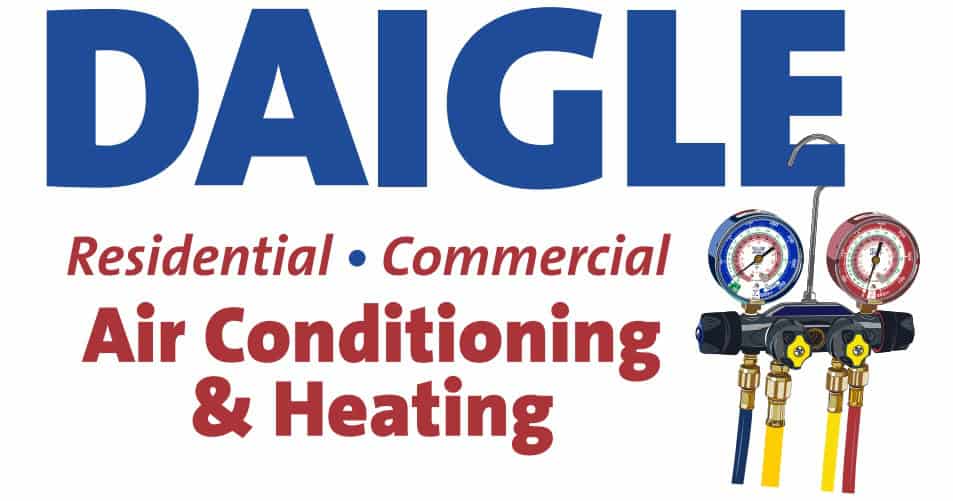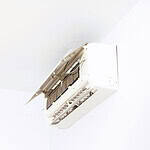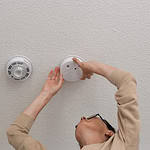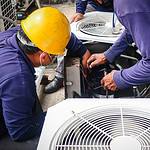In an era where energy costs are continually rising, homeowners, business owners, and apartment complex managers are perpetually on the lookout for ways to cut down on expenses, and one significant area of savings is air conditioning. Smart thermostats are not just a technological innovation; they are a pivotal tool in reducing AC repair and maintainance costs. This article will delve into how smart thermostats can minimize your air conditioning expenses and the additional benefits they offer in terms of system maintenance and efficiency.
Understanding Smart Thermostats
What exactly are smart thermostats? Essentially, they are devices that control your home’s heating and cooling system more efficiently than traditional thermostats. They learn from your habits, allowing for automatic adjustments to your heating and cooling settings, which optimizes your home’s energy consumption. For instance, by reducing AC use when no one is home, a smart thermostat directly reduces energy bills. Such devices also offer remote control via smartphone apps, adding a layer of convenience that traditional thermostats simply cannot match.
- Energy Optimization: Smart thermostats adjust the temperature based on your schedule.
- Remote Access: Control your AC settings from anywhere using your smartphone.
- Learning Capabilities: These devices learn your preferences to optimize energy usage.
Benefits of Smart Thermostats for AC Efficiency
One might wonder, how do smart thermostats actually enhance AC efficiency? By maintaining optimal temperature settings tailored to the times when you are actually home and need cooling, these thermostats prevent the AC from running unnecessarily, which not only saves energy but also reduces wear and tear on your AC unit, thus reducing AC repairs. Additionally, many models provide maintenance notifications, which help prevent costly repairs by alerting you to potential issues before they become major problems.
- Preventive Maintenance Alerts: Get notifications about needed AC maintenance.
- Optimal Temperature Settings: Keep your home comfortably cool without wasting energy.
- Reduced Wear and Tear: Less strain on your AC unit extends its lifespan.
Reducing AC Repair Needs
Smart thermostats contribute significantly to reducing the frequency of AC repairs. By ensuring that the air conditioning system operates only when necessary and under optimal conditions, these devices help avoid the common pitfalls that lead to breakdowns. If the AC runs less frequently, there is less chance for its components to wear out, which translates into fewer calls to the repair service, something every property manager or homeowner can appreciate.
- Fewer Operational Hours: Reduced running time means less mechanical fatigue.
- Alerts for Filters and Other Issues: Stay on top of maintenance without keeping track manually.
- Efficiency Reports: Some smart thermostats provide insights into your system’s efficiency.
Smart Thermostats and AC Lifespan
The lifespan of an air conditioning unit can be significantly extended with the use of a smart thermostat. By managing how often and how hard the unit works, it ensures that the system is not subjected to unnecessary stress. Moreover, the ability to maintain consistent, optimal temperature settings avoids the extreme fluctuations that often lead to mechanical stresses and eventual AC repairs.
- Consistent Operation: Avoids the highs and lows that stress the system.
- Less Frequent Repairs: With fewer breakdowns, your AC system lasts longer.
- Investment Protection: Extend the life of your AC investment through smarter operation.
Cost Saving from Smart Thermostats
On a practical level, the primary motivation for many to switch to smart thermostats is the tangible reduction in AC costs. According to the U.S. Department of Energy, using a programmable thermostat can save you up to 10% a year on heating and cooling by simply turning your thermostat back 7°-10°F for 8 hours a day from its normal setting. The savings can be even greater with a smart thermostat that optimizes these adjustments based on actual usage patterns.
- Energy Department Statistics: Save up to 10% annually on heating and cooling.
- Usage-Based Savings: Adjustments based on real-time data can increase savings.
- Return on Investment: Most homeowners find that smart thermostats pay for themselves quickly.
Installation and Setup
Installing a smart thermostat might seem daunting, but many models are designed with user installation in mind. Typically, it involves removing the old thermostat, connecting a few wires, and configuring the device, which is usually guided by an intuitive setup process in the device’s app. For those less comfortable with DIY projects, professional installation options are widely available. For best and safest results, contact your AC repair company.
- DIY Friendly: Many smart thermostats come with detailed, easy-to-follow instructions.
- Professional Help: Local HVAC professionals can provide installation services.
- Online Support: Manufacturers often provide online tutorials and support forums.
Choosing the Right Smart Thermostat
Selecting the right smart thermostat involves considering several factors including compatibility with your existing HVAC system, the features offered, and your personal lifestyle needs. Brands like Nest, Ecobee, and Honeywell offer a range of models that cater to different needs and budgets, ensuring there’s a solution that fits virtually any setting.
- HVAC Compatibility: Check compatibility with your current system.
- Feature Set: Decide which features are most important to you.
- Budget Considerations: Evaluate options within your price range.
Key Insights
Reflecting on the discussion, the benefits of smart thermostats extend beyond just monetary savings. They contribute to a more sustainable living environment, offer greater control and comfort, and enhance the overall efficiency of HVAC systems.
Smart Thermostat FAQ
- How long does it take for a smart thermostat to pay for itself?
- Typically, a smart thermostat pays for itself through energy savings within one to two years.
- Can I install a smart thermostat in an apartment?
- Yes, as long as you have access to your heating and cooling system’s thermostat and get permission from the property owner.
- Do smart thermostats work with all types of AC systems?
- Most modern smart thermostats are compatible with a wide range of AC systems, but it’s important to check compatibility before purchasing.
- What should I do if my smart thermostat isn’t saving me money?
- Ensure it is installed and programmed correctly, consider consulting with an HVAC professional to check system efficiency.
- Are there any security risks with smart thermostats?
- Like any connected device, there is a potential risk, but using strong passwords and secure Wi-Fi networks can mitigate most security concerns.
By integrating smart thermostats into their properties, owners and managers not only optimize their HVAC operations but also contribute to a more energy-efficient world.
- About the Author
- Latest Posts
Founded in 2006, Daigle A/C & Heating has grown from a small startup to a multi-state operation through dedication to detail and quality workmanship. Specializing in air conditioning and heating solutions, the company not only serves residential and commercial clients but also holds contracts with various U.S. Government outlets.












